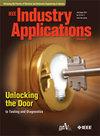A Second-Order Cone Programming (SOCP) Based Co-Optimization Approach for Integrated Transmission-Distribution Optimal Power Flow
IF 4.2
2区 工程技术
Q2 ENGINEERING, ELECTRICAL & ELECTRONIC
引用次数: 0
Abstract
The advancement of grid technology with high integration of distributed energy resources (DERs) has led to dynamic changes in the distribution network with a substantial impact on the transmission network. With this impact of DER integration, separate optimal power flow (OPF) analysis in transmission and distribution (TD) networks is not always adequate for the optimal operation of the power system. Hence, this paper proposes a coordinated TD-OPF co-optimization method with second-order cone programming (SOCP) to address this challenge. This co-optimization method provides a feasible solution for an integrated TD system, bridging the gap between transmission and distribution network challenges with renewable-based DERs through data exchange between the transmission and distribution networks. Moreover, each distribution network employs a distributed OPF (D-OPF) algorithm, which supports decentralized operation, thereby enhancing the reliability and scalability of the proposed OPF model for large TD networks. The goal is to reduce the overall system planning expenses, optimizing the microgrids in distribution networks and the major generation units within the transmission network. The efficacy of the proposed TD-OPF co-optimization approach has been verified through numerical analysis.基于二阶锥规划(SOCP)的输配一体化最优潮流协同优化方法
分布式能源高集成度的电网技术的进步,导致配电网发生动态变化,对输电网产生重大影响。由于DER集成的影响,单独的最优潮流分析并不总是足以满足电力系统的最优运行。为此,本文提出了一种与二阶锥规划(SOCP)相结合的TD-OPF协同优化方法。这种协同优化方法为综合输配电系统提供了一种可行的解决方案,通过可再生能源DERs在输配网络之间的数据交换,弥合了输配网络之间的差距。此外,每个配电网采用分布式OPF (D-OPF)算法,支持分散式运行,从而提高了所提OPF模型在大型输配电网络中的可靠性和可扩展性。其目标是降低整体系统规划费用,优化配电网中的微电网和输电网中的主要发电机组。通过数值分析验证了TD-OPF协同优化方法的有效性。
本文章由计算机程序翻译,如有差异,请以英文原文为准。
求助全文
约1分钟内获得全文
求助全文
来源期刊

IEEE Transactions on Industry Applications
工程技术-工程:电子与电气
CiteScore
9.90
自引率
9.10%
发文量
747
审稿时长
3.3 months
期刊介绍:
The scope of the IEEE Transactions on Industry Applications includes all scope items of the IEEE Industry Applications Society, that is, the advancement of the theory and practice of electrical and electronic engineering in the development, design, manufacture, and application of electrical systems, apparatus, devices, and controls to the processes and equipment of industry and commerce; the promotion of safe, reliable, and economic installations; industry leadership in energy conservation and environmental, health, and safety issues; the creation of voluntary engineering standards and recommended practices; and the professional development of its membership.
 求助内容:
求助内容: 应助结果提醒方式:
应助结果提醒方式:


